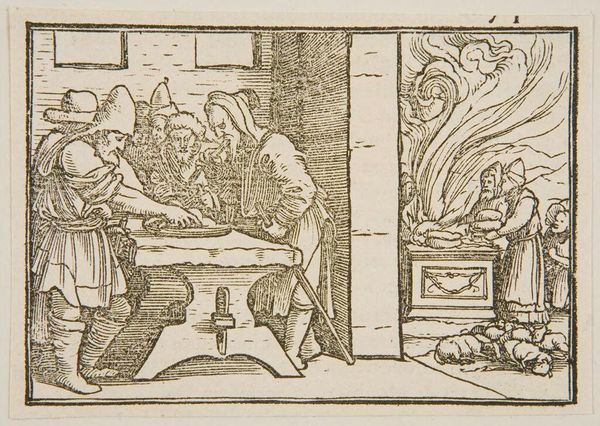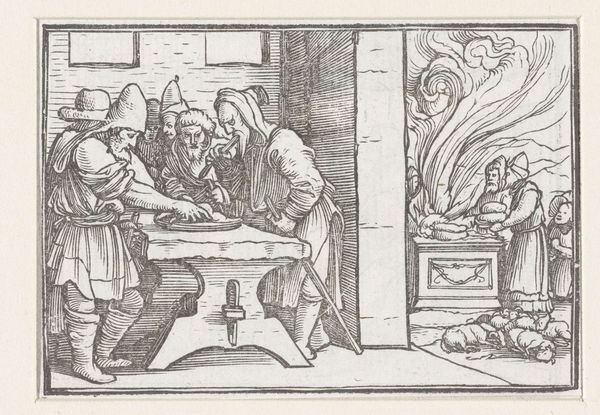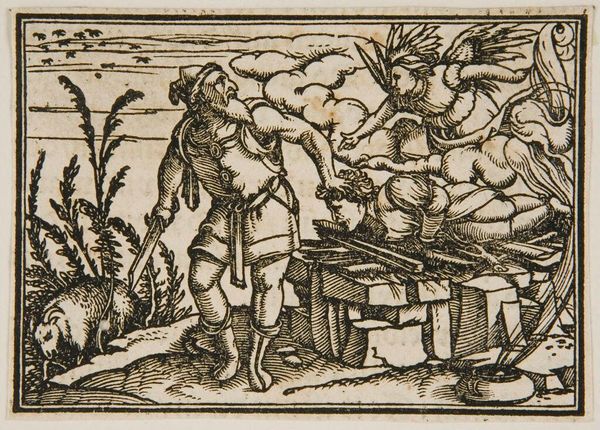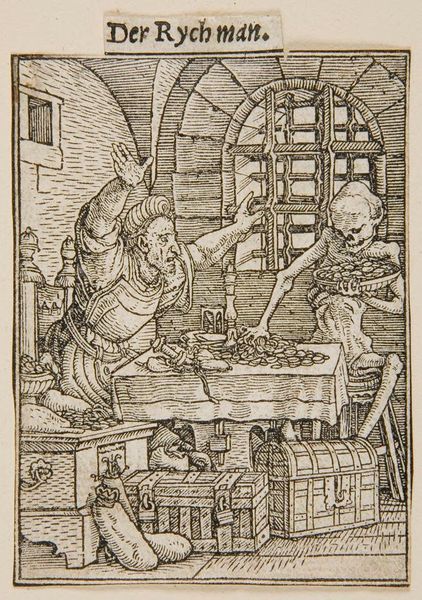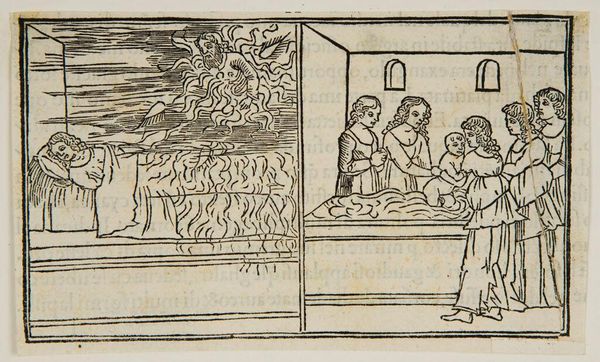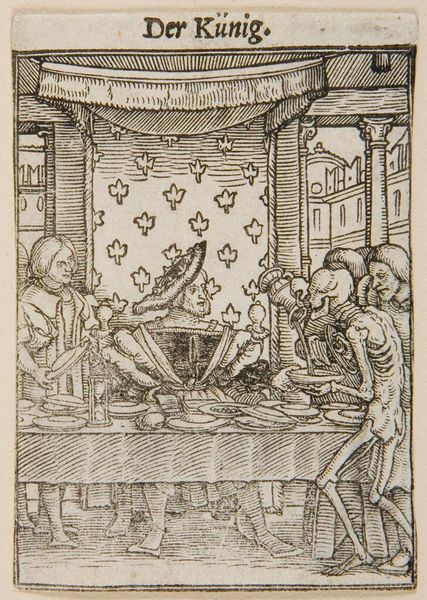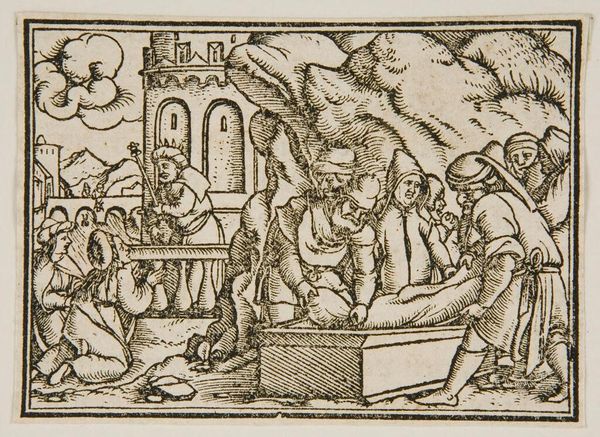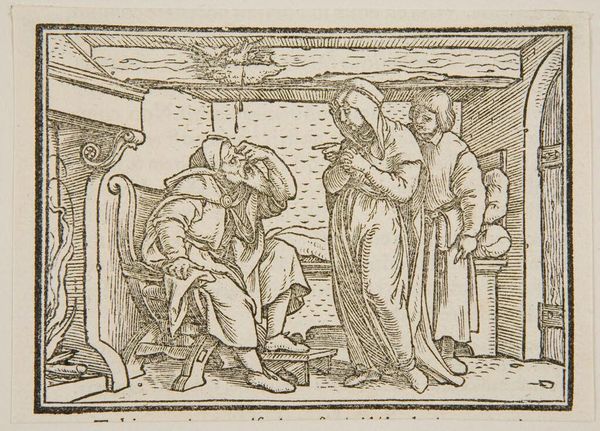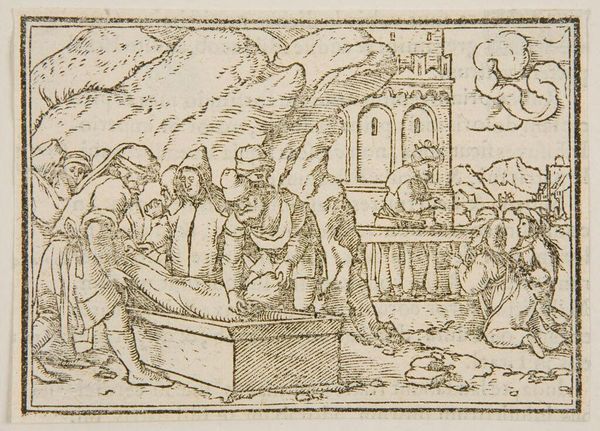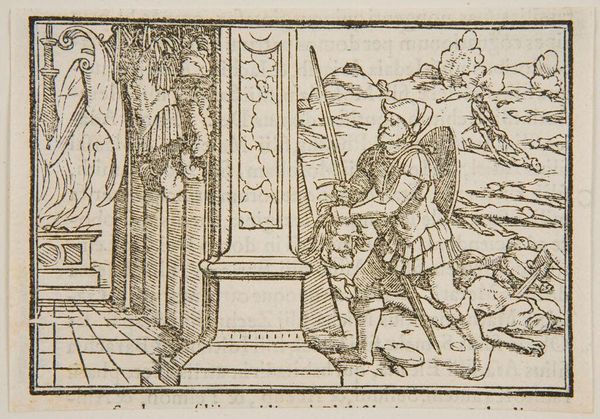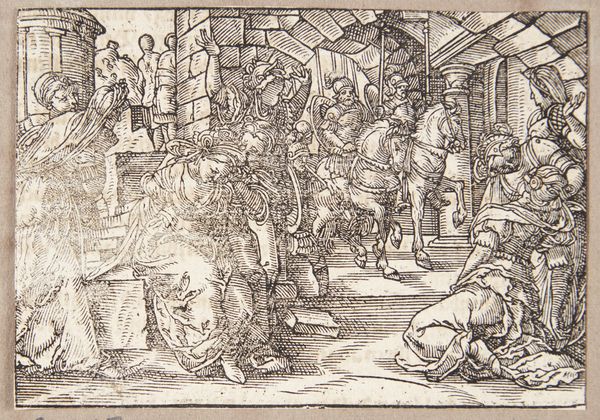
Copyright: CC0 1.0
Curator: Holbein's woodcut, titled "2 Kings XVI," presents a scene of ritual sacrifice with the figures delineated in stark lines. The flames consume the offering, towering over the kneeling king. Editor: The composition is striking. The sharp contrast creates a dramatic tension, a visual manifestation of the conflict within the depicted narrative. Curator: Indeed. Holbein, who died in 1543, was operating within a specific socio-political context, where religious narratives were employed for various purposes. This print likely circulated among a populace grappling with theological shifts and the role of leadership. Editor: I'm drawn to how Holbein uses the materiality of the woodcut itself – the way the lines carve out form and texture – to amplify the drama. It's not just representation; the medium itself contributes to the emotional impact. Curator: I agree. The act of carving wood, a laborious process, reflects the labor embedded in producing and distributing religious narratives. These images were not merely aesthetic objects but commodities circulated within a network of exchange. Editor: Absolutely, and that laborious process allowed Holbein to really capture the essence of the scene in a way that other mediums may not have. The texture and density of the lines draw the eye right to the heart of the drama. Curator: A perspective I hadn't fully considered, but one that enriches my appreciation for the piece. Editor: And for me, your insights shed new light on the layers of meaning embedded in what might initially appear as simply a stark and striking image.
Comments
No comments
Be the first to comment and join the conversation on the ultimate creative platform.
